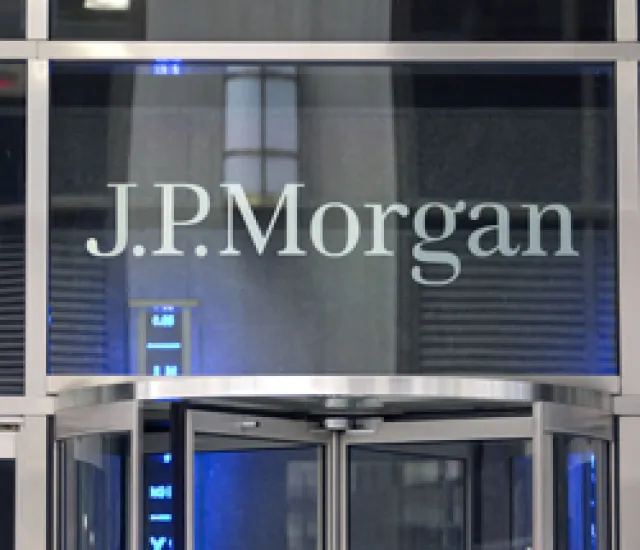Default — real or imagined, unlikely or seemingly inevitable — has been on the minds of many fixed-income investors ever since Dubai World’s stunning announcement in November 2009 that it was unable to meet its debt payments. Neighboring emirate Abu Dhabi rode to the rescue a few weeks later, but it wasn’t long before rumors began to circulate about a possible sovereign default in Greece. Then Ireland. Then Portugal. Then the once-unthinkable: that a politically polarized debt-ceiling debate in Washington would trigger a default in the U.S. Congressional paralysis was among the reasons Standard & Poor’s cited for downgrading the U.S.’s vaunted AAA credit rating in early August. Which firm’s analysts have won most often in the twenty years since the All-America Fixed-Income Research Team was first published? We’ve crunched the numbers, collated the data, and we’ll be publishing our Hall of Fame next Wednesday.
“We were always taught to think of U.S. Treasuries as a ‘risk-free’ asset, at least from a default perspective,” observes William Alexander Roever III, a strategist at J.P. Morgan. “But the intense political gridlock around raising the U.S. debt limit — and S&P’s response to the gridlock — means we can’t think of Treasuries as risk-free any longer. In the end, the Treasury obviously didn’t default, but the idea that it possibly could — even if it is only a tiny probability — is powerful.”
In a wildly volatile market often fueled by rumor and exaggeration, investors demand reliable guidance that focuses on facts and filters out noise. The firm that does the best job of providing the kind of advice that investors need in these turbulent times is J.P. Morgan, which leads Institutional Investor’s All-America Fixed-Income Research Team for a second consecutive year. The firm captures 52 team positions, three fewer than last year, but widens its lead over repeat second-place winner Barclays Capital, which claims 44 (down from 49). BofA Merrill Lynch Global Research, with 39 positions, holds steady in third place for a fifth year running, while Goldman, Sachs & Co., with 27, lands at No. 4 for a third consecutive year. Rounding out the top five is Deutsche Bank, which rises one rung after picking up five positions, for a total of 15. Results reflect the opinions of more than 1,600 money managers and buy-side analysts at some 520 institutions that manage roughly $11.6 trillion in U.S. fixed-income assets.
Terrence Belton, global head of fixed-income research at J.P. Morgan and co-leader, with Srinivasan Ramaswamy, of the top-ranked teams in Fixed-Income Strategy and Interest Rate Derivatives and the No. 3 team in U.S. Governments Strategy, says investors were riveted by the drama in Washington. “Both our traditional fixed-income clients and nontraditional fixed-income investors have focused heavily on these issues, leading us to become much more engaged with a wider swath of market participants,” he says.
Belton believes the downgrade will have only a modest impact in the short term but will carry lasting ramifications. “We estimate that intermediate Treasury yields will rise by about 60 basis points over time as U.S. fiscal metrics deteriorate from close to triple-A to more like double-A,” he says. “The main impact in the short run of elevated levels of debt — not the downgrade per se — is that it limits the amount of fiscal stimulus available to policymakers and is therefore indirectly one of the factors keeping growth weak and rates low.”
Belton says that investor needs are changing with regard to U.S. fixed-income research. “With European events affecting U.S. markets to a much greater degree than before, offering a global perspective has become more important,” he says. “Our U.S. rates team has better leveraged our strong European rates research franchise, since the peripheral European crisis has been a key driver of U.S. rates this year. Also, our analysis of U.S. sovereign-debt issues has been helped by our strong emerging-markets research franchise.”
Laurence Kantor, BarCap’s global head of research, says the S&P downgrade is “somewhat of a red herring,” in that it is less significant than the issues that prompted it. “The main concern around the debt-ceiling showdown in the minds of investors was that Washington policymakers could not agree on a plan for fundamental tax and entitlement reform, instead kicking the can down the road to November,” he says. “However, despite all of its problems, the debt-ceiling deal was an important first step on the path toward fiscal sustainability.”
Kantor says many money managers have already moved past the contentious debt debate and are focusing on the crises in Europe and the economic slowdown in the U.S. He notes, though, that the downgrade did provide an opportunity for his fixed-income research department to demonstrate how nimble it had become.
“Timeliness, delivery, accessibility and cross-asset perspectives have all become more important, as they are highly valued by our clients,” he explains. “With the landscape changing continuously, timely guidance on market events for investors is critical. The most recent example of this was the U.S. downgrade, which occurred on a Friday evening. We mobilized key strategists across asset classes over that weekend to both publish our immediate reaction on that Saturday and host calls across all regions in time for the Asia open on Monday.”
According to Kantor, BarCap analysts have always emphasized the fact that investors don’t think of assets as existing in class silos, and thus the firm has promoted collaborative cross-asset and cross-region research. Last year, BarCap introduced “Global Energy Outlook,” a periodic report that contrasts commodities market fundamentals with recent price movements and delivers investment recommendations across commodities, equities and fixed income. “We also produce a quarterly ‘Global Outlook,’ which provides an integrated view of every product across all regions, along with fundamental economic analysis and asset allocation recommendations,” Kantor says.
Earlier this year, BarCap introduced a weekly publication, “Global Corporate Week in Review,” that summarizes rating changes at the individual security level for both equities and fixed income. “More importantly, it lists the key equities and credit calls of the week and provides a look at the major events of the week ahead,” he explains. Finally, the analysts produce a “Global Macro Daily,” which features the views of the firm’s strategists and economists on the latest market-moving events, highlighting important developments and trends across regions and asset classes.
As concerned as investors have been lately about U.S. leaders’ seeming inability to do anything, they are even more worried that Washington will do the wrong thing, says Michael Maras, head of global credit and global emerging-markets fixed-income research for BofA. “Another issue that clients bring up is the potential for and implications of a policy mistake, either too much fiscal tightening — unlikely in our opinion — or nothing credible — certainly a high risk right now,” he says. “The initial response to the downgrade doesn’t inspire a lot of confidence in Congress’s willingness to address the real issues.”
It’s that lack of confidence that’s creating a lot of the current market turbulence. “The dependence on policy response and the policy constraints make for an uncertain and volatile environment,” Maras adds. Prospects for a near-term recovery are threatened and demand for Treasuries will likely remain elevated for the rest of the year, he believes — and the possibility of further credit rating downgrades by S&P and other agencies could aggravate the already-gloomy outlook.
“Congress’s inability to properly address the fiscal problem increases the chance of the Federal Reserve Board’s remaining on hold or initiating further easing programs — and this creates an environment of low rates, reach for yield, tight credit spreads, low volatility of short rates and ongoing crisis-like conditions,” Maras explains. “The U.S. fixed-income market will also remain focused on the European sovereign and banking risks, as the lack of a European Union–European Central Bank coordinated effort to resolve the fiscal issues in a number of peripheral countries has raised concerns about the health of the European banking system.”
BofA has also adjusted its research output to meet the changing needs of investors. Last year the firm launched a weekly publication, “The U.S. Fixed-Income Situation,” with contributions from all its U.S. fixed-income analysts, and a Monday-morning conference call with investors to highlight its U.S. macro outlook.
“We have seen growing interest in macro research, especially the credit-risk profile and economic fundamentals of sovereign credits across all regions,” he says. In addition, accelerating inflation in emerging markets has underscored the importance of country risk assessment in client portfolios. “The potential contagion from the EU sovereign-debt crisis and fears of emerging-markets-driven inflation have forced U.S. investors to allocate more resources and time to macroeconomic analysis,” he adds.
Another area of growing concern among investors is the possibility of default by U.S. cities, counties and states — an issue exacerbated by the rating cut, according to Citi’s George Friedlander, who captains the top team in Municipals Strategy. “The S&P downgrade of Treasuries has created an entirely new round of concerns about muni credit strength over the longer term. The issue isn’t the downgrade per se but the signal it provides about the need for additional sharp cuts in federal spending that are likely to affect state and local budgets,” he explains.
This at a time when fears of widespread defaults, fueled by forecasts from such noted market observers as Nouriel Roubini and Meredith Whitney, among others, have been sweeping through the muni bond world. “We have had to spend considerable time and energy over the past nine months explaining why the self-proclaimed muni experts were incorrect — as they certainly have been,” Friedlander says. In the first half of this year, not a single agency-rated municipality defaulted, according to Moody’s Investors Service.
Fear and uncertainty have created buying opportunities. Friedlander and his associates published a report in January, “Fund Outflows, Credit Fears and Market Weakness Interaction Leave Muni Yields at Extremely Attractive Levels,” in which they argued that munis all along the yield curve were extremely undervalued, so investors should put cash to work in long maturities and extend maturities in existing portfolios. Yields on 30-year triple-As closed at 5.08 percent on the day the analysts published their report; by the end of July, they had fallen to 3.84 percent, Friedlander notes.
However, the muni market can come under pressure when and if Treasury yields rebound, “especially if new issue volume increases from current painfully low levels — which we expect,” he says. “We could also see some additional credit-spread widening as the market adapts to the likelihood of additional deficit cuts that include reductions in federal aid for state and local governments.”
Rumor and speculation have also been creating turmoil in the market for agency debt, says Margaret Kerins, a Chicago-based strategist with RBS Securities, who leads the top-ranked team in Federal Agency Debt Strategy for a fifth straight year. Some investors were worried that the S&P downgrade would spark a fire sale, but that has not happened. “We did not see any forced selling of Treasuries or agencies as a result of the downgrade,” she says. “However, there are indirect consequences, such as the sell-off in equities that reduces household wealth and prolongs the economic recovery. In addition, the downgrade should result in higher Treasury rates, a steeper yield curve, tighter swap spreads as Treasuries cheapen and tighter agency spreads versus Treasuries.”
One key area of investor focus related to the debt-ceiling debate was the possible loss of Treasury support for the government-sponsored enterprises. “The tail risk was the triggering of mandatory receivership for Fannie Mae and Freddie Mac if Treasury were unable to provide the needed capital to eliminate any net-worth deficiency,” Kerins explains. “In receivership assets would be sold to pay off liabilities, translating into higher losses and the potential for senior-debt haircuts. Of course, this type of an event would be cataclysmic to the financial markets and the credibility of Treasury, which is why most market participants agreed that the debt ceiling would be resolved — albeit in the final hour.”
Clients have also expressed concerns about agency supply. “We are solid in our conviction that the GSE balance sheets will continue to shrink due to the strong bipartisan political will to reduce the systemic risk inherent in the retained portfolios,” she says. “This trend will reduce the amount of high-quality spread assets available to investors. In fact, agency outstandings have decreased by $800 billion, or 25 percent, since the end of 2008. We expect net negative issuance of $213 billion for 2011 and total outstanding to fall by 30 percent over the next five years.”
The RBS team has been urging money managers to take advantage of the recent cheapening in agency spreads. “We think that agencies are essentially de facto Treasuries that still trade as a spread product due to trading desk hedges,” Kerins adds, noting that “agency supply will continue to dwindle over the next several years, reducing the amount of high-quality spread assets available as investments. This is agency-spread-supportive over the longer term.” However, she says, the strategists “expect bouts of spread volatility in upcoming months due to the European sovereign crisis and uncertainty surrounding U.S. economic recovery.”
Periodic volatility will also rattle currency and foreign exchange markets in the midst of global deleveraging, according to Jens Nordvig-Rasmussen, who leads the Nomura Securities International team to a first-place debut in Currency/Foreign Exchange.
“The core focus is on the outlook for the euro zone and the potential for systemic collapse,” he says. “Beyond the euro-zone-specific issue, one big global question pertains to the role of emerging-markets currencies in an environment of pronounced risk aversion. Group of Ten economies now have more debt than emerging-markets economies, and as risk characteristics change, market dynamics will too. The second half of 2011 could see certain emerging-markets currencies assume a safe-haven status for the first time.”
The Nomura team has been advising clients to short euros — “but be very pragmatic about which specific cross” — and go long on emerging-markets currencies, “but be prepared for batches of volatility.”
Last fall, Nordvig-Rasmussen and his colleagues took a contrarian view on Spain, which at the time was considered by many market observers to be the next euro zone economy to need rescue. “Our fundamental analysis of Spain pointed to greater resilience,” he says. The analysts constructed trades based on the view that the euro would hold steady against the dollar into the first quarter: “We entered double-no-touch structures on November 18 and again on December 6, investing $200,000 of premium. We booked profits on these range-trading strategies on January 17, locking in a gain of $95,000,” Nordvig-Rasmussen reports.
In Europe, as in the U.S., a perceived lack of leadership and political will is ratcheting up investor anxiety. “Key issues for clients have been the unfolding debt crisis in the euro zone and the hesitant policy efforts to contain the crisis, the dollar-weakening trend and the structural weakness in the U.S. economy — especially in comparison to fast-growing emerging-market economies — and the search for safe government paper,” he says. “This search is impacting both private sector capital flows and central bank asset allocation.”
And it is leading many investors to U.S. Treasuries despite the downgrade. “The rating cut helped spook equities and other markets, and it actually forced a flight to quality and pushed yields lower on two- and three-year Treasuries,” observes J.P. Morgan’s Roever, whose team debuts atop the newly added Short-Duration Strategy sector; he also leads the No. 2 crew in Municipals Strategy. That’s a scenario, he says, “the Fed may have trapped in amber by announcing its intent to keep rates exceptionally low for the next two years.”
Although the Fed may have indicated that it will maintain its current stance through mid-2013, that doesn’t mean the markets are immune from jolts — and analysts who provide short-duration strategies often have to make quick adjustments. Case in point: In early April, when three-month dollar LIBOR stood at 27.5 basis points, the J.P. Morgan team predicted that the rate would fall to 22 basis points by the end of June. In the middle of that month, after the rate had slid to 24.7 basis points, the analysts reversed course because of “growing investor anxiety over the European banks as well as the proximity of the [U.S.] debt limit”; they forecast that the rate would shoot to 35 basis points by the end of September. It was up to 25.7 basis points at the end of July and by late August had risen to 32.7 basis points. “The market’s obviously not there yet — but the trend is,” Roever observes.






